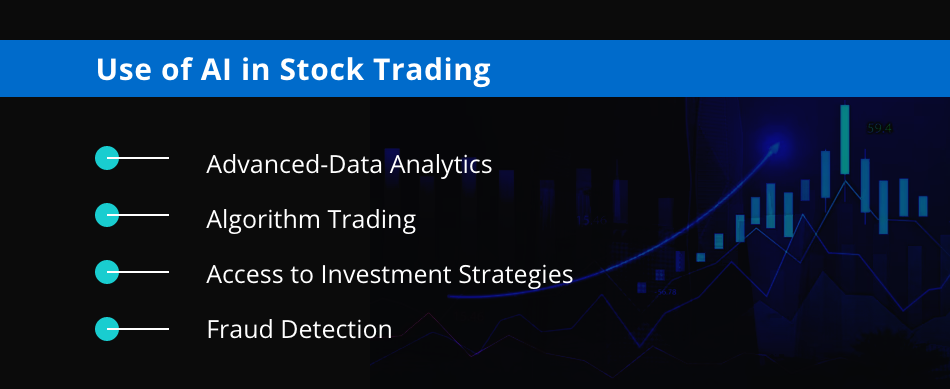20 Pro Suggestions To Selecting AI Stock Trading Platform Sites
20 Pro Suggestions To Selecting AI Stock Trading Platform Sites
Blog Article
Top 10 Suggestions On How To Evaluate The Integration Of Ai Stock-Predicting/Analyzing Platforms And Their Compatibility
When you are evaluating AI trading platforms compatibility and integration are crucial elements. A platform that seamlessly integrates into your existing workflows and tools can boost efficiency and increase productivity. Below are the top ten suggestions to evaluate compatibility and integration.
1. Check Brokerage Integration
Platform integration with preferred brokers or trading accounts: Ensure that the platform is compatible with your chosen brokerage or account.
Trade execution: Check if the platform allows direct trade execution via the broker integrated.
Account synchronization: Make sure that the platform can update in real-time account balances and positions as well as transaction histories.
2. Evaluation of API availability
API access - Check that the platform includes an API that allows developers to build customized tools or automate work flows.
API documentation: Review to see if there are examples that clearly demonstrate how the API is used.
Rate limits: Verify if the API has reasonable rate limits and can accommodate your expected amount of usage.
3. Assess Third-Party Integration
Popular tools: See whether your platform is compatible with well-known tools such as Google Sheets or Excel.
Import and export of data. Ensure the tool can export/import easily from/to other tools.
Extensions/Plugins: Make sure your platform is able to support extensions and plugins that can provide more features.
4. Test Compatibility Using Operating Systems
Desktop compatibility - Ensure that the platform you choose can be used with Windows, macOS and Linux.
Mobile compatibility - Check to see if a platform comes with a mobile version that is compatible with iOS as well as Android.
Web-based accessibility: To enhance flexibility, make sure that the platform's interface is accessible through the web browser.
5. Assess the Data Integration Capabilities
Data sources - Make sure that the platform is connected to multiple sources of information (e.g. news feeds or market data, and sentiments on social media).
Real-time Data Feeds Examine to determine if your application provides real-time analysis.
Historical data import: Check whether the platform supports the import of historical data for backtesting or analysis.
6. Assessment of Cloud and On-Premise compatibility
Cloud-based platforms: Make sure that the platform is available from any location that has an internet connection.
On-premises Solutions: If you would rather deploy on premises, make sure the platform you choose to use is compatible.
Check the hybrid model. It is a hybrid model that combines on-premise and cloud capabilities.
7. Check for Cross Platform Synchronization
Device synchronization - Make sure that your platform is synchronized to sync settings and information across all devices (desktops, mobiles, tablets).
Verify the real-time update to see whether any changes made by one device will be reflected immediately on the other.
Access offline: Determine whether the platform supports only limited access to data or functions in offline mode.
8. Examine the compatibility of trading Strategies
Strategies for trading that are automated or algorithmic must be backed by the trading platform.
Custom indicators. Check whether the platform allows the use of technical indicators or scripts.
Strategy backtesting Check to see if your trading platform allows backtesting using historical data.
9. Review Security and Compliance
Data encryption: Verify whether the platform is using encryption to safeguard data in transit and while at rest.
Authentication : Verify that the platform has authentic methods that are safe (e.g. two-factor verification).
Regulation Compliance: Make sure your platform complies with relevant regulations.
10. Test Scalability and Performance
Scalability - Make sure that the platform you choose will meet your ever-growing requirements in terms of data and data.
Performance under load: Determine if your platform responds well to market conditions with high volatility.
Resource usage: Find out if your platform uses the resources of its system (CPU/memory, bandwidth) efficiently.
Bonus Tips
User feedback: Check out user testimonials and reviews to evaluate the platform's capacity to integrate.
Free Trial: Try the integration of the platform into existing workflows and tools by using a trial or demo.
Customer support: Make sure that the platform offers robust support for integration issues.
These suggestions will assist you to evaluate the compatibility and integration capabilities of AI software for analyzing and predicting stocks. This will ensure that they are compatible with your existing systems and increase your efficiency in trading. See the top here on ai stocks for website info including using ai to trade stocks, ai stock picker, ai stock trading bot free, ai stock picker, ai stock trading bot free, ai for stock trading, ai investing app, trading with ai, ai stock, market ai and more.
Top 10 Tips For How To Evaluate The Scalability Ai Trading Platforms
The ability to scale AI-driven trading and stock prediction platforms is crucial for ensuring they can cope with increasing demand for data, user demands and market complexities. These are the top 10 ways to determine scalability.
1. Evaluate Data Handling Capacity
Tips: Make sure the platform is able to handle and analyze large amounts of data (e.g., historic stock data, live market feeds, as well as alternative data like news or social media).
Why: A platform that is scalable must be capable of handling the ever-growing volumes of data with no degradation in performance.
2. Test the Real-Time Processing Capabilities of your processor
Test the platform to see how it handles data streams in real time, such as breaking news or live price updates.
What is the reason? Trading decisions that are real-time require real-time analysis of data. Delays can result in lost opportunities.
3. Check the Cloud Infrastructure for Elasticity
Tip: Check if your cloud platform (e.g. AWS, Google Cloud or Azure) and able to dynamically scale resources.
The reason: Cloud platforms are flexible, and are able to be scalable up or down based on demand.
4. Algorithm Efficiency
Tips: Examine the efficiency of computation in AI models (e.g., deep learning and reinforcement learning) employed to predict.
Reason: Complex algorithmic structures are resource-intensive. Making them more efficient is the most effective way to scale.
5. Explore the possibilities of Parallel Processing and distributed computing
TIP: Find out if the platform uses parallel processing or distributed computing frameworks (e.g., Apache Spark, Hadoop).
Why: These technologies allow more efficient data processing and analytics across many nodes.
Review API Integration.
TIP: Test the platform's ability to connect with APIs from outside (e.g. brokerage APIs, market data providers APIs).
Why? Seamless integration allows the platform to be adapted to changing trading environments and data sources.
7. Analyze User Load Handling
To check the effectiveness of your platform, simulate high-traffic.
Why: A platform that is scalable must be able to keep up with performance as the number users grow.
8. Examine the model's retraining capabilities and the model's adaptability
Tip: Examine how often and efficiently the AI models are retrained with new data.
The reason is that as markets change, models must be updated rapidly to remain precise.
9. Verify Fault Tolerance and Redundancy
TIP: Make sure the platform includes failover mechanisms, and has redundancy in the event of software or hardware failures.
The reason: Since downtime is costly when trading and trading, fault tolerance is essential to the ability to scale.
10. Monitor Cost Efficiency
Tip: Evaluate the cost of scaling the platform, which includes cloud resources, data storage, and computational power.
The reason: Scalability shouldn't be a burden that is unsustainable, so balancing performance and expense is essential.
Bonus tip Future-proofing
Make sure the platform can adapt to changes in regulations and incorporates new technologies like quantum computing or advanced NLP.
If you concentrate your attention on these elements, you can accurately assess the capacity of AI prediction and trading platforms. This ensures that they are durable, efficient, as well as ready for further expansion. Follow the best best ai stock prediction blog for blog advice including invest ai, chart ai trading, ai stock prediction, chart analysis ai, ai stock trader, ai copyright signals, chart analysis ai, best ai for stock trading, ai stock prediction, free ai stock picker and more.